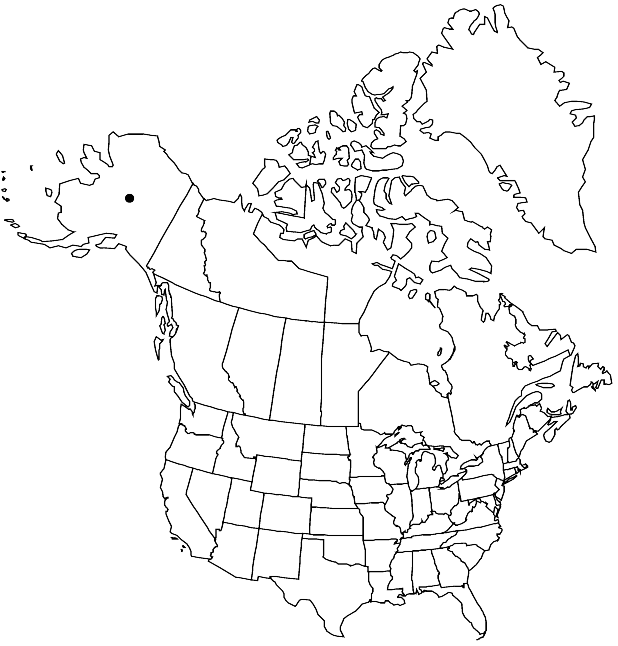Smelowskia johnsonii
Canad. Field-Naturalist 115: 341. 2001.
Plants densely white-canescent throughout; caudex simple. Stems: several from base, unbranched or branched proximally, 0.4–1.6 dm, trichomes simple, 1–1.5 mm, mixed with smaller, dendritic ones. Basal leaves: petiole 0.8–1.3 cm, ciliate, trichomes simple; blade oblanceolate to spatulate, 0.8–1.8 cm × 3–7 mm, (terminal segments 0.2–0.7 cm × 1–4 mm), margins usually entire or apically 3-toothed or -lobed, rarely palmately 3-lobed, (terminal segments linear to ovate), apex obtuse (surfaces densely villous, silvery, trichomes primarily simple, 1–1.8 mm). Cauline leaves subsessile; blade similar to basal, smaller distally, margins entire. Racemes elongated in fruit. Fruiting pedicels ascending, (often forming less than 40˚ angle, straight), proximalmost bracteate, 11–27 mm, pubescent, trichomes primarily simple (to 1.5 mm). Flowers: sepals 3–3.5 mm; petals lavender to purplish, suborbicular to obovate, 4–5 × 3–4 mm, narrowed to claw, ca. 2 mm, apex rounded; anthers oblong, 0.5–0.7 mm. Fruits ascending, ellipsoid to obovoid-ellipsoid, subterete, 5–6 × 2–3 mm, base and sometimes apex cuneate; valves each with obscure midvein; ovules 4 per ovary; style 0.2–0.3 mm. Seeds 2.2–2.7 × ca. 1 mm.
Phenology: Flowering Jun–Aug.
Habitat: Steep talus slopes, loose rocks, limestone rubble, talus
Elevation: 0-600 m
Discussion
Of conservation concern.
Smelowskia johnsonii is known only from the Bering Strait District, Alaska. It is a distinctive species resembling only superficially the villous forms of S. borealis with simple trichomes. From the latter, S. johnsonii is easily distinguished by having subterete (versus angustiseptate) fruits 2–3 (versus 4–8) mm wide, non-secund (versus secund) and straight (versus often curved) fruiting pedicels, 4 (versus 10–18) ovules per ovary, and simple or apically 3 (or 5)-toothed or -lobed (versus palmately (3 or) 5 (or 7)-lobed) basal leaf blades. It is readily distinguished from all species of the genus by having leaves densely silvery pubescent, with primarily simple trichomes 1–1.8 mm.
Selected References
None.
